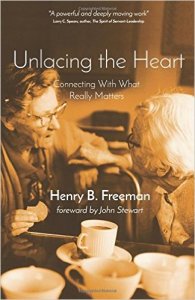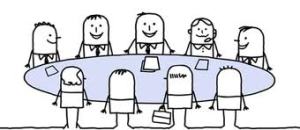 One of the clients I’ve been working with for a while is located in Bloomington, Indiana, which is where I met Rachael Jones. Rachael is a transgender woman who used to own “Rachael’s Cafe”. Unfortunately, after eight years of serving coffee, food and a side of acceptance, Rachael closed her doors last month. During my last visit, the executive director handed me a copy of the June 29th edition of The Herald-Times newspaper with a front page story headline that read “Downtown gathering place closes after 8 years of fostering acceptance“. He shared the newspaper story with me because he knew I had wanted to be there for Rachael’s last day, but I just couldn’t make it work with my travel schedule.
One of the clients I’ve been working with for a while is located in Bloomington, Indiana, which is where I met Rachael Jones. Rachael is a transgender woman who used to own “Rachael’s Cafe”. Unfortunately, after eight years of serving coffee, food and a side of acceptance, Rachael closed her doors last month. During my last visit, the executive director handed me a copy of the June 29th edition of The Herald-Times newspaper with a front page story headline that read “Downtown gathering place closes after 8 years of fostering acceptance“. He shared the newspaper story with me because he knew I had wanted to be there for Rachael’s last day, but I just couldn’t make it work with my travel schedule.
So, what does any of this have to do with non-profits or fundraising? Well, tucked away inside of Kurt Christian’s front page article, there was an amazing story Rachael told that I think is applicable to every fundraising professional’s life. And I want to share it for two reasons:
- To pay tribute to an amazing human — Rachael Jones (someone I greatly admire and wish I had half her courage)
- To help new fundraising professionals understand something very important about their donors
In the article, Rachael tells the newspaper reporter about a life lesson she learned from one of the construction workers who had been working on the renovation of the cafe prior to it opening in 2007. After coming out to the crew as being a transgender woman, one of the guys asked Rachael if she would consider judging a chili cook-off event in a small rural town south of Bloomington, Indiana.
Rachael was hesitant to accept the invitation because:
- small town America isn’t ready for a transgender woman
- people would judge her
- it might not be safe
Or so she thought.
Thanks to the insistence of the construction worker who had invited her, Rachael showed up and judged the chili cook-off. In hindsight, here is what she said about this life changing event:
“I went, and I was so sure I was going to be judged. But these people were wonderful. It was a beautiful experience, and I had a lot of fun, and I learned a great lesson. I had put them in a box that didn’t exist; they didn’t belong in that box.”
I just love how Rachael framed her experience. I’ve been thinking about these words for weeks during countless hours of windshield time driving from client to client. The more I think about these words, the more I wondered “how many people have I put in boxes during my life?”
It was during one of these contemplative moments that another more interesting question bubbled to the forefront:
“How many donors have I put in a box that didn’t exist and they didn’t belong in?”
I fear that I’ve done it a lot, and I’ve justified it all in the name of “segmenting donors lists“.
Segmenting donors is a common practice in most fundraising shops, and it is a best practice. Not only does it keep you from asking people to attend events who hate going to those type of fundraisers, but it also keeps you from sending mail to people who prefer email communications. When done right, you are categorizing donors based on their feedback and their wishes.
HOWEVER . . . is it possible to take the practice of donor segmentation too far? Could we be creating boxes that shouldn’t exist? I’m inclined to think so. Here are a few confessions I’ll make when it comes to constructing boxes for donors that I probably shouldn’t have:
- I’ve looked at a list of donors and said something like: “They wouldn’t be interested in supporting THAT program“
- Prior to a stewardship visit, I’ve decided what to share with the donor based on what I thought they were interested in hearing
- I’ve excluded donors from receiving certain solicitations because I was fearful they might make a contribution, which could undercut another solicitation for a different project
In this era of so-called “Donor-Centered Fundraising,” shouldn’t we take a page out of Rachael Jones’ book by engaging our donors in more exploratory conversations and do a little less segmenting and box building?
I’m interested in what you have to say about this question. Please share your thoughts and experiences in the comment box below.
Here’s to your health! (And congrats to Rachael on eight great years and for being an inspiration to us all)
Erik Anderson
Founder & President, The Healthy Non-Profit LLC
www.thehealthynonprofit.com
erik@thehealthynonprofit.com
http://twitter.com/#!/eanderson847
http://www.facebook.com/eanderson847
http://www.linkedin.com/in/erikanderson847

 It is a basic truism for some organizational development professionals that “Culture trumps strategy“. In the last few months, this expression has been front and center in my mind. I guess the reason it bothers me is because of its implications, which is none of what I bring to the table as a non-profit and fundraising consultant matters unless the organization’s culture is ready to receive it and act upon it.
It is a basic truism for some organizational development professionals that “Culture trumps strategy“. In the last few months, this expression has been front and center in my mind. I guess the reason it bothers me is because of its implications, which is none of what I bring to the table as a non-profit and fundraising consultant matters unless the organization’s culture is ready to receive it and act upon it. I’ll stop Googling now. Because I think I get it now.
I’ll stop Googling now. Because I think I get it now.
 I came across a cool
I came across a cool  Last month I sat down with an executive director and two board members to explore how I might be able to help their organization grow their organizational capacity. Over the course of an hour, we talked about all kinds of awesome things such as:
Last month I sat down with an executive director and two board members to explore how I might be able to help their organization grow their organizational capacity. Over the course of an hour, we talked about all kinds of awesome things such as: The people closest to your mission are board and staff members. So, when the organization is short on cash and cannot meet its payroll obligations, it is only natural to ask board members to dig a little deeper.
The people closest to your mission are board and staff members. So, when the organization is short on cash and cannot meet its payroll obligations, it is only natural to ask board members to dig a little deeper. Don’t pass the basket and ask smaller, low capacity donors. Identify your larger, more capable donors and schedule an in-person meeting to explain what has occurred and ask for their support.
Don’t pass the basket and ask smaller, low capacity donors. Identify your larger, more capable donors and schedule an in-person meeting to explain what has occurred and ask for their support. Accounts receivable can be any number of the following individuals/entities:
Accounts receivable can be any number of the following individuals/entities: If your organization finds itself in this mess, then the bank is probably not extending you additional credit. While managing your cash flow on the backs of your vendors is a bad thing to do, sometimes life presents you with a bunch of bad options.
If your organization finds itself in this mess, then the bank is probably not extending you additional credit. While managing your cash flow on the backs of your vendors is a bad thing to do, sometimes life presents you with a bunch of bad options. This crisis came to your door for a reason, and you owe it to your clients, donors, volunteers and community to make sure it doesn’t happen again. The following is an incomplete checklist of things you should consider:
This crisis came to your door for a reason, and you owe it to your clients, donors, volunteers and community to make sure it doesn’t happen again. The following is an incomplete checklist of things you should consider: For those who are curious, here are those 12 steps to a simple and effective face-to-face solicitation:
For those who are curious, here are those 12 steps to a simple and effective face-to-face solicitation: This morning’s video also reminded me of another YouTube video a friend sent me a few days ago. It is a montage of video clips featuring actor Matt Damon in the HBO television series “Entourage“. The YouTube video illustrates the emotions, fears, and mistakes associated with asking your friends and colleagues for a charitable contribution.
This morning’s video also reminded me of another YouTube video a friend sent me a few days ago. It is a montage of video clips featuring actor Matt Damon in the HBO television series “Entourage“. The YouTube video illustrates the emotions, fears, and mistakes associated with asking your friends and colleagues for a charitable contribution.![IMG_20150802_102350339_HDR[1]](https://donordreams.files.wordpress.com/2015/08/img_20150802_102350339_hdr1.jpg?w=300) A few days ago, I was in an airport trying to catch a connecting flight when I saw a poster advertisement for an international non-governmental organization (NGO) that provides medical services to children and families in third world countries. I took a picture of the portion of the advertisement that immediately caught my attention.
A few days ago, I was in an airport trying to catch a connecting flight when I saw a poster advertisement for an international non-governmental organization (NGO) that provides medical services to children and families in third world countries. I took a picture of the portion of the advertisement that immediately caught my attention. One of the clients I’ve been working with for a while is located in Bloomington, Indiana, which is where I met Rachael Jones. Rachael is a transgender woman who used to own “Rachael’s Cafe”. Unfortunately, after eight years of serving coffee, food and a side of acceptance, Rachael closed her doors last month. During my last visit, the executive director handed me a copy of the June 29th edition of The Herald-Times newspaper with a front page story headline that read “Downtown gathering place closes after 8 years of fostering acceptance“. He shared the newspaper story with me because he knew I had wanted to be there for Rachael’s last day, but I just couldn’t make it work with my travel schedule.
One of the clients I’ve been working with for a while is located in Bloomington, Indiana, which is where I met Rachael Jones. Rachael is a transgender woman who used to own “Rachael’s Cafe”. Unfortunately, after eight years of serving coffee, food and a side of acceptance, Rachael closed her doors last month. During my last visit, the executive director handed me a copy of the June 29th edition of The Herald-Times newspaper with a front page story headline that read “Downtown gathering place closes after 8 years of fostering acceptance“. He shared the newspaper story with me because he knew I had wanted to be there for Rachael’s last day, but I just couldn’t make it work with my travel schedule.